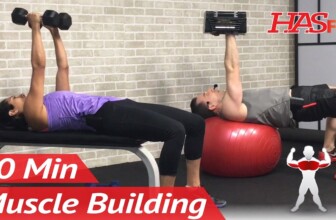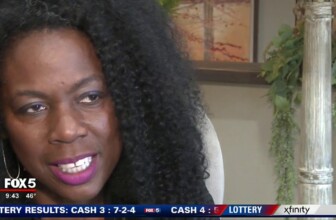Structure of a CBT Session
Session structure allows both the client and therapist to be on the same page and maintain the flow from session to session.
[Music] CBT therapists use a particular session structure which at first glance to somebody learning CBT might think is too structure but it's um it's really a wonderful way to approach each session and I can I can explain why first of all structure helps the therapist be more time efficient and helps the client begin to understand what they can expect from each session and and generally this is how our sessions flow first of all when a client comes into the office a therapist wants to maintain and reestablish that Therapeutic Alliance and so the first thing we do is we want to a check on how our client's doing and in so doing we're we're conducting a mood check we'll also look over the measures that a client filled out right before they saw us and if anything pops out from those we can ask our clients right there and there about uh responses on the measures we also ask if there's anything that happened between last session and this session that's important for us to know about we we um refer to that as the bridge and that's also a way to um reestablish that Therapeutic Alliance sort of um drawing the client's attention from last session to the current session and then very important next step is to ask about the action plan or the the experiment or the work they were going to do in between the two sessions and we do this for a couple of reasons um first of all clinicians understand that a lot of learning takes place between sessions we want the client to understand that we think it's important to check on that and um if we don't ask about the action plan the client might get the sense that it wasn't important if they did it or not so we we always make sure to ask about the action plan and then uh sometimes agenda items come right from that sometimes clients were unable to do their between session work um and then of course we want to know why uh sometimes the client um very pleased about how they did their work between sessions and and that gets reviewed next the therapists ask what the client would like to work on we collaboratively set the agenda very often clients will bring up three four or more items for the agenda and then the therapist would want to know what's most important if we only have time to cover one or two items what would that be and and together we decide what would be most important sometimes clients don't know what to suggest for an agenda item and in that case I might ask something like well is there anything you've got coming up that you could use my help with and we work on the agenda items and then we I'm certain to leave time for uh setting the action plan for the next week you don't want your clients to leave your session without knowing what they're going to work on what they're going to experiment with what they're going to try one of my favorite parts of the um therapy session is asking the client for a summary asking the client what he or she will remember this week what's going to be most important for you to keep in mind this week what was most helpful that we talked about and right then I'm kind of helping the learning take place it's kind of like a moment where the client can can think about what what they learned and what's going to be most useful and then I asked the client this is always a surprise to someone who's new to CPT I always ask the client for some feedback about the session itself I say something like how do you think the session went and is there something I could have done to make it a better session for you is there something I could have done a little more of or a little less of and clients really really appreciate this and therapists appreciate it because we're always growing and learning as well
#Structure #CBT #Session
source
Structure of a CBT Session
19 June 2025
At 4utoday, we are your ultimate destination for the best deals, offers, coupons, articles, and reviews. Our platform provides a wide range of discounts and promotions on various products and services.
With a dedicated team searching the web, we bring you the most exciting savings. Our informative articles and reliable reviews help you make informed decisions. Join us on our journey to discover incredible savings and make smarter shopping choices.
With a dedicated team searching the web, we bring you the most exciting savings. Our informative articles and reliable reviews help you make informed decisions. Join us on our journey to discover incredible savings and make smarter shopping choices.
Affiliate Disclaimer:
At 4utoday, we may participate in various affiliate marketing programs. This means that we may earn a commission from qualifying purchases made through the links, advertisements, or promotions on our website. The commissions we earn help support the maintenance and operation of our platform, allowing us to continue providing you with the best deals, offers, coupons, articles, and reviews.
Rest assured that this will not affect the price you pay for any products or services you purchase. We strive to provide honest and reliable information, and our recommendations are based on our own research and experience. We appreciate your support and trust in our recommendations.
Rest assured that this will not affect the price you pay for any products or services you purchase. We strive to provide honest and reliable information, and our recommendations are based on our own research and experience. We appreciate your support and trust in our recommendations.











Hii
How to draw a duck: First, grab a piece of paper and place it carefully on your desk. Then take your pen and remove the cap or alternatively, click it so that the tip pokes out of the protective shell of the pen. Place the tip of your pen on the paper and then draw a duck. There, you have successfully learned how to draw a duck.
🎉🎉🎉
This was very helpful, thank you
Really helpful! 🙌
It’s difficult to get a cbt therapist that is covered. Also many therapist claim they do cbt and they don’t. I’m on my third therapist who doesn’t practice cbt …so I’m looking for another
EXCELLENTLY EXPLAINED. thank you!
Many thanks, very helpful and meaningful.
I'm a grad student with a mock video session due today. This by far has been the most informative video I have seen so far. Thank you!!!
Great video thanks so much!
Thank you so much <3
I personally think this is helpful . But I wouldn't ask my client, "what could I have done better 🤔
"3:47" This is just superb, thanks, I would love your opinion.
Have you ever come across – Lammywalness Erase Depression Guide ?
Go to 𝗱𝗲𝗹𝗲𝘁𝗲𝗱𝗲𝗽𝗿𝗲𝘀𝘀𝗶𝗼𝗻 .𝗰𝗼𝗺 (remove spaces)
It is a good one of a kind product for beating depression minus the normal expense. Ive heard some incredible things about it and my best friend Jordan after many years got great success with it.
HOLY FUCKING SHIT SPEAK FASTER FUCK
While addressing issues related to anger, it is imperative to understand key fundamentals of anger…
https://youtu.be/LcfmYtQA-e0
Good
Jesus what superficial crap.
robots
CBT Cock and Ball Torture
Cock and ball torture
Cock and ball torture?
Summary of steps: check on how client is doing, check on how "homework" went, set topic for the session collaboratively with client, address the topic decided, set "homework" to work on between sessions, ask for feedback from the client on how to improve next session
Thank you.
Very helpful to a newbie, thanks!